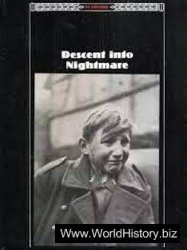Although the term came to represent almost anyone who opposed imperial regulation in the 1760s, and was extended to those who fought for independence after 1776, originally the Sons of Liberty referred to the committee in each community that organized the opposition to the Stamp Act (1765). The size and social standing of these committees varied from town to town. Boston’s committee, originally called the Loyal Nine, did not have many members, and most came from the middling ranks of society. New York City had either 10 or 18 members, depending on what list is used, but had more merchants and lawyers represented among the number. Charleston, South Carolina, had 26 members, including Christopher Gadsden, a wealthy merchant, and many artisans. Albany had more than 90 Sons of Liberty, while other groups had more than 100.
Whatever their number and social standing, the Sons of Liberty played a central role in the resistance to the Stamp Act by placing themselves between the colonial leadership and the mob in the street. The Sons of Liberty thereby added muscle to nonimportation agreements and declarations in opposition to imperial regulation while striving to restrain crowd behavior. Without rioting to coerce stamp distributors into resigning, to close courts, and to ensure noncompliance with the Stamp Act, all the petitions and pamphlets in the world would have been meaningless. But if the riots went too far, then the political message of the anti-Stamp Act forces would be harmed. The Sons of Liberty engaged in a precarious balancing act by organizing crowd demonstrations, developing contacts with mob leaders, and by interceding at crucial moments to mute the full impact of the mob. They were not always successful; but they managed to control or guide the situation often enough to sustain the opposition to imperial regulation and nullify the effect of the Stamp Act.
The Sons of Liberty was a local association within each community; there was no pan-colonial group called Sons of Liberty. However, as the crisis wore on, different Sons of Liberty began to correspond with each other to coordinate positions, and some groups even sent delegations to visit one another.
Once the Stamp Act was repealed, in some communities the Sons of Liberty disbanded and continued in others. The experience of organizing resistance, contacting other communities, and working with both the mob and colonial leadership had two long lasting results. First, the Sons of Liberty gave additional political voice to men from the middle of society. Second, in reaction to other imperial measures, many of the same men either reasserted the Sons of Liberty, or organized new committees, to coordinate resistance. When rebellion turned to revolution, these committees even began to take over the functions of government. See also committees of correspondence.
Further reading: Paul A. Gilje, The Road to Mobocracy: Popular Disorder in New York City, 1763-1834 (Chapel Hill: University of North Carolina Press, 1987); Pauline Maier, From Resistance to Revolution: Colonial Radicals and the Development of American Opposition to Britain, 1765-1776 (New York: Knopf, 1972); Edmund S. Morgan and Helen M. Morgan, The Stamp Act Crisis: Prologue to Revolution (Chapel Hill: University of North Carolina Press, 1953).




 World History
World History









